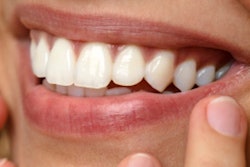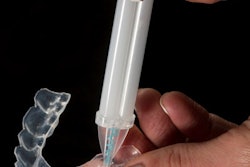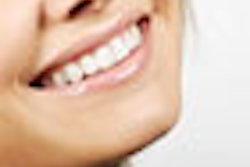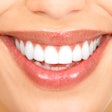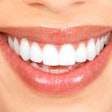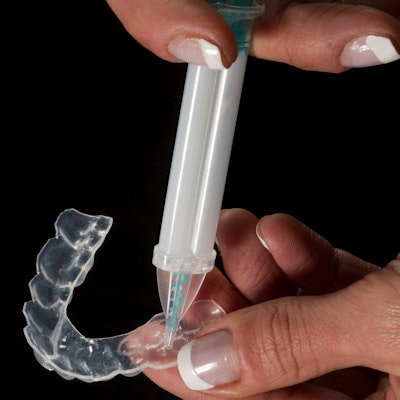
How can dental practitioners and patients combat the greater susceptibility of teeth to staining immediately after bleaching? A new study tested the effectiveness of various surface treatments and waiting times at preventing staining from red wine after bleaching.
Researchers bleached 100 teeth in the laboratory and then subjected them to artificial saliva or various whitening maintenance treatments, followed by immersion in red wine immediately or an hour later. They found that tooth color was not affected by postbleaching treatment (Journal of Clinical and Experimental Dentistry, May 1, 2017, Vol. 9:5, pp. e608-e616).
"Surface treatments were similar to artificial saliva for bleached enamel susceptibility to red wine staining," wrote Debora Monteiro, DDS, and colleagues from the department of restorative dentistry at Federal University of Minas Gerais in Belo Horizonte, Brazil. "Immediate or one-hour-postponed contact with red wine did not affect bleached enamel color."
Dr. Monteiro is a doctoral candidate at the university and a professor of dentistry at Faculty of Administrative Studies of Minas Gerais in Belo Horizonte.
Waiting to drink
Bleached enamel can be more susceptible to staining than unbleached enamel, particularly just after undergoing the process. Research has shown that superficial roughness is greater after bleaching, which increases staining through dye adhesion, with ingestion of colored food and beverages making this more pronounced, according to the study authors. The gel pH used in whitening treatments could be responsible, and colored beverages with acid pH may cause enamel mineral loss and increase vulnerability to staining, they noted.
Previous research has found that fluoride and other remineralizing solutions can positively affect remineralization, and complex casein phosphopeptide-amorphous calcium phosphate (CPP-ACP) can reduce staining immediately after bleaching. Casein, calcium, and phosphate can provide resistance to acid dissolution.
Given these findings, the researchers of the current study sought to learn more about methods to minimize staining after teeth bleaching. They used 100 bovine dental crowns, examining the color of each with a digital spectrophotometer (Vita Easyshade Compact, Vita) before bleaching.
The researchers bleached each specimen with 35% hydrogen peroxide (Whiteness HP, FGM Produtos Odontologicos) with 18 drops of hydrogen peroxide and six drops of thickener. They treated each specimen with three 15-minute-long sessions to simulate one bleaching session without light application. They then washed the teeth and evaluated their color a second time.
Next, the teeth were divided into five groups that were treated with the following:
- Immersion in neutral artificial saliva for 10 minutes
- Neutral 2% sodium fluoride (Flugel, DFL Industria e Comercio) for four minutes
- CPP-ACPF paste (GC MI Paste Plus, GC) for three minutes
- Two sprays of a bleach maintenance rinse (Keep White Rinse, DMC)
- Polishing with aluminum oxide-impregnated feltrum disks (SuperBuff, Shofu)
All the groups except for the saliva group were rinsed for 10 seconds after immersion. Immediately afterward, half of the specimens (five) in each of the five groups were immersed in 25 mL of red wine in an incubator at 37 ± 1° C for 15 minutes and the other half in each group after one hour. During the waiting period, the crowns were kept in artificial saliva.
Wine immersion was followed by cleaning with a toothbrush (Colgate Total 12, Colgate-Palmolive) for three seconds. Then the researchers assessed the color of each tooth by digital spectrophotometer a third time.
After analyzing their results, the researchers found no significant differences among the teeth in susceptibility to staining with red wine after bleaching based on surface treatment or waiting period time.
| Medians of bleached enamel color difference measured by spectrophotometer | ||
| Surface treatment | Waiting time for contact with red wine | |
| None | 1 hour | |
| Saliva | 21.93 | 19.27 |
| Fluoride | 16.38 | 25.57 |
| CPP-ACPF paste | 15.88 | 19.73 |
| Keep White Rinse | 16.39 | 18.89 |
| Polishing | 23.75 | 16.53 |
"We may infer that it is not necessary to wait to ingest colored beverages after bleaching since there is no positive effect on color maintenance, although some reports found higher susceptibility to staining immediately after bleaching," the authors wrote.
Benefits of saliva
The study findings suggest that saliva could have a protective effect on bleached enamel like surface treatment effects, which could be mineralizing, the authors noted. Previous research has shown that artificial saliva, fluoride, and CPP-ACP solution have remineralizing effects, and bleached enamel microstructural defects can be repaired by absorption and precipitation of saliva components, such as calcium and phosphate.
However, the use of artificial saliva and not natural saliva in the current study is a limitation, the authors acknowledged. They recommended additional studies on the properties of saliva, its effects on bleached enamel staining susceptibility, and its differences compared with artificial saliva on this process.
"With this study, we may conclude that the effects of surface treatments with neutral sodium fluoride, CPP-ACPF, Keep White Rinse, and polishing with aluminum oxide impregnated feltrum disks after tooth bleaching were similar to that induced by artificial saliva regarding bleached enamel susceptibility to red wine staining," the authors wrote.




